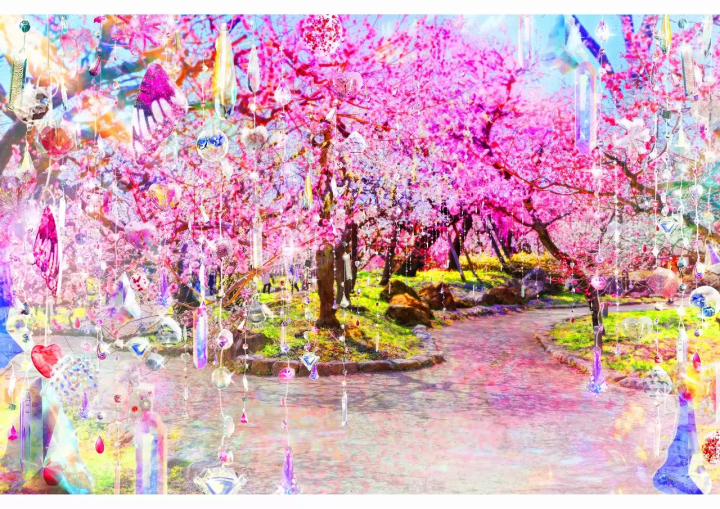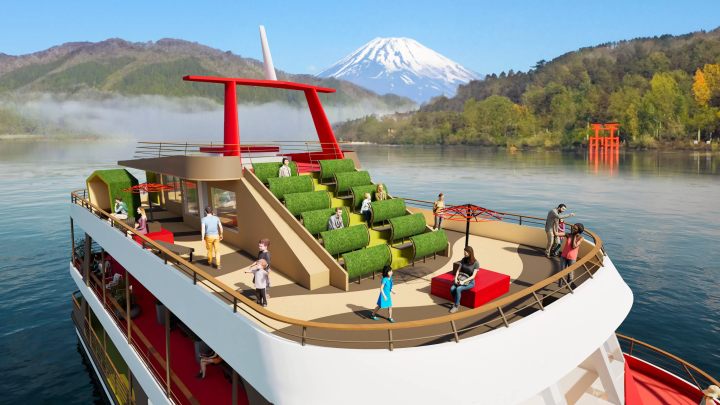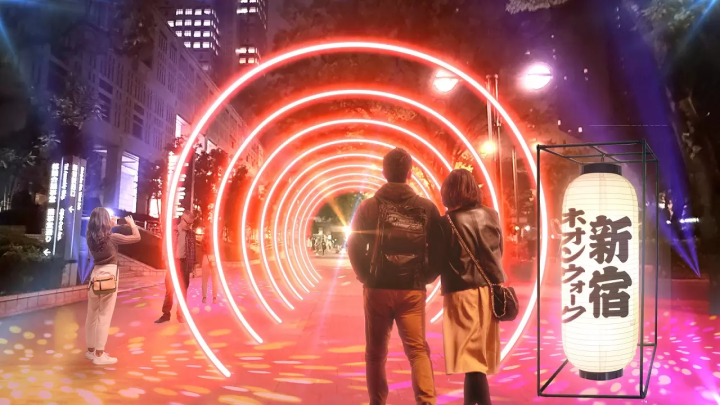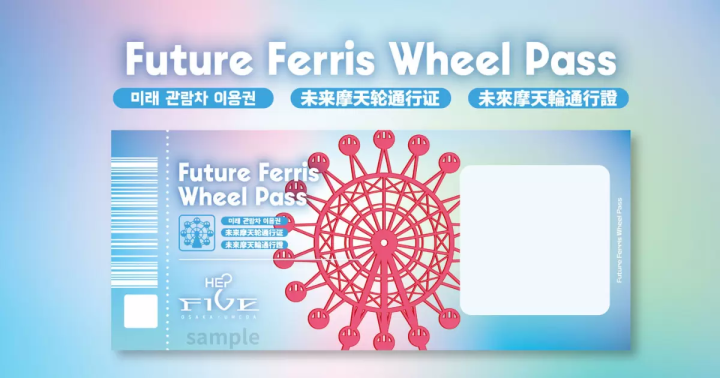MOA MUSEUM OF ART"Sakura" Highlights Map

At the MOA MUSEUM OF ART, the colorful cherry blossoms are in full bloom from late March to early April. Along with the beautiful cherry blossoms inside and outside the museum, you can also enjoy the spectacular view of Sagami Bay and Japanese art. This is a spot where you can fully enjoy the arrival of spring, along with sightseeing and hot springs in Atami.
MOA MUSEUM OF ART"Sakura" Highlights Map
From late March to early April, various cherry blossoms will be in full bloom at the MOA MUSEUM OF ART. The MOA MUSEUM OF ART of Art is not only a place to appreciate artworks, but also a place to enjoy the beauty of nature throughout the seasons. In spring, cherry blossoms bloom all over the museum, providing visitors with a soothing sight. Take this opportunity to enjoy the cherry blossoms at the museum.
The MOA MUSEUM OF ART of Art is an art museum located in Atami City, where you can enjoy traditional Japanese beauty. Located at an altitude of about 250m, it is also known as a scenic spot with a panoramic view of Sagami Bay. Atami is also famous as a hot spring resort, so you can enjoy hot springs and sightseeing in addition to visiting the museum.
-
Table of Contents
- 1. Somei Yoshino
- ②Weeping cherry tree
- 3. Red auspicious clouds
- ④Oshima Sakura
- ⑤ Yaebenishidare (double-flowered red weeping tree)
- ⑥ Yaeshidare (double weeping)
- MOA MUSEUM OF ART of Art's surrounding facilities and facilities
1. Somei Yoshino

Location: Muah Square
Best time to see: Late March
Somei-Yoshino is the most popular variety of cherry tree in Japan, and most of the cherry trees in the country are Somei-Yoshino. The flowers have five petals and are pale pink when they first bloom, but turn almost white when in full bloom.
The Yoshino cherry trees, which stand in the spacious space of Mua Square, blend in with the surrounding scenery to create a magnificent spring landscape. The sight of the cherry blossoms blooming against the beautiful backdrop of the sea and sky is sure to be an unforgettable sight for all visitors.
②Weeping cherry tree

Location: Behind the Tea Garden Ippakuan *Open for a limited time
Best time to see: Late March
It has small, single petals and is white or pale pink in color. Its distinctive branching gives it a unique atmosphere that is different from other cherry blossoms.
Especially on rainy days, the branches bend even more under the weight of the tree, creating a more elegant appearance. When you enjoy the scenery along with the quaint architecture of Ippakuan, you will feel as if you have wandered into the scenery of old Japan.
3. Red auspicious clouds

Location: 1st floor, Tea Garden, Bamboo Grove
Best time to see: Late March to early April
This rare cherry tree, unique to this region, was named "Beni Zuiun" (Beni Zuiun) because it was discovered in Zuiunkyo, Atami. It is a type of Satozakura and is thought to be related to Oshimazakura. It has large, single flowers with five round petals and a pale red color. It also has a pleasant faint fragrance, so passing by it will immerse you in a feeling of elegance.
The beautiful contrast with the bamboo forest that spreads across the tea garden creates a tranquil atmosphere that is unique to Japanese gardens. On sunny days, the sunlight filtering through the bamboo gently illuminates the cherry blossom petals, creating a fantastical sight.
④Oshima Sakura

Location: 1st floor, Tea Garden, Bamboo Grove
Best time to see: Late March
It is one of the original species of cherry blossoms, and is the parent of Somei-Yoshino and Kawazu-zakura. The petals are an elegant white color, and it has a stronger fragrance than other cherry blossoms. The sweet fragrance that wafts faintly on the breeze is one of the charms unique to Oshima-zakura.
The Oshima cherry blossoms bloom quietly in the depths of the bamboo forest, exuding their presence in the silence. The contrast between the lush green of the bamboo and the pale white of the cherry blossoms is stunning, soothing the hearts of those who see them.
⑤ Yaebenishidare (double-flowered red weeping tree)

Location: Above the escalator entrance
Best time to see: Late March
This double-flowered cherry tree has deep crimson flowers. It is commonly known as "Endo Sakura," "Sendai Double Weeping Cherry," "Sendai Small Cherry," and "Heian Benishidare," and its drooping branches swaying in the wind are very elegant.
Located near the escalators, the beauty of the cherry blossoms as you walk along the path leading to the building is particularly striking. At dusk, the cherry blossoms bathed in the setting sun turn a deep red, making for an even more beautiful sight.
⑥ Yaeshidare (double weeping)

Location: Above the escalator exit (above the entrance to Mua Square)
Best time to see: Late March
Also known as "Thread Cherry Blossom," this cultivated variety of Edohigan has characteristic drooping branches that create a beautiful silhouette. The densely packed pink double-flowered flowers create a soft, cloud-like landscape when in full bloom.
The Yoshino cherry trees, which stand in the spacious space of Mua Square, blend in with the surrounding scenery to create a magnificent spring landscape. The sight of the cherry blossoms blooming against the beautiful backdrop of the sea and sky is sure to be an unforgettable sight for all visitors.
MOA MUSEUM OF ART of Art's surrounding facilities and facilities
The area surrounding the MOA MUSEUM OF ART of Art is dotted with tourist spots such as Atami Onsen Town and Kinomiya Shrine, which you can enjoy in addition to visiting the museum. There is also a restaurant and cafe inside the museum, where you can enjoy a relaxing meal while taking in the beautiful scenery.
At the MOA MUSEUM OF ART, you can enjoy the cherry blossoms as well as masterpieces of Japanese art, and experience the arrival of spring with all five senses. Please come and enjoy the cherry blossom scenery that can only be experienced here.
X
HP
The museum is built on a 230,000m2 hill in Atami, and you can see beautiful views of Izu Oshima and Hatsushima from the main lobby and Moore Square. The facility also features a garden that changes with the seasons, with cherry blossoms and azaleas in the spring, fresh greenery in early summer, and autumn leaves in the fall. Enjoy a relaxing resort-like experience while savoring art and nature. The museum opened in 1982, and 36 years later, from 2016 to 2017, it underwent renovation work to revamp the exhibition space and update the facilities. The lobby area and exhibition space were designed by the New Material Laboratory, which is headed by internationally renowned contemporary artist Hiroshi Sugimoto together with architect Tomoyuki Sakakida. We tackled the question of how to reconstruct and pass on the materials and techniques used in ancient, medieval, and early modern times in the present day, and through various attempts, we created a modern space using traditional Japanese materials, embodying the new MOA MUSEUM OF ART.
The contents on this page may partially contain automatic translation.































![[2026] Top 5 Strawberry Picking Spots in Tokushima, Naruto| Farms and Access Guide for January to May](https://resources.matcha-jp.com/resize/720x2000/2025/03/06-227165.webp)



